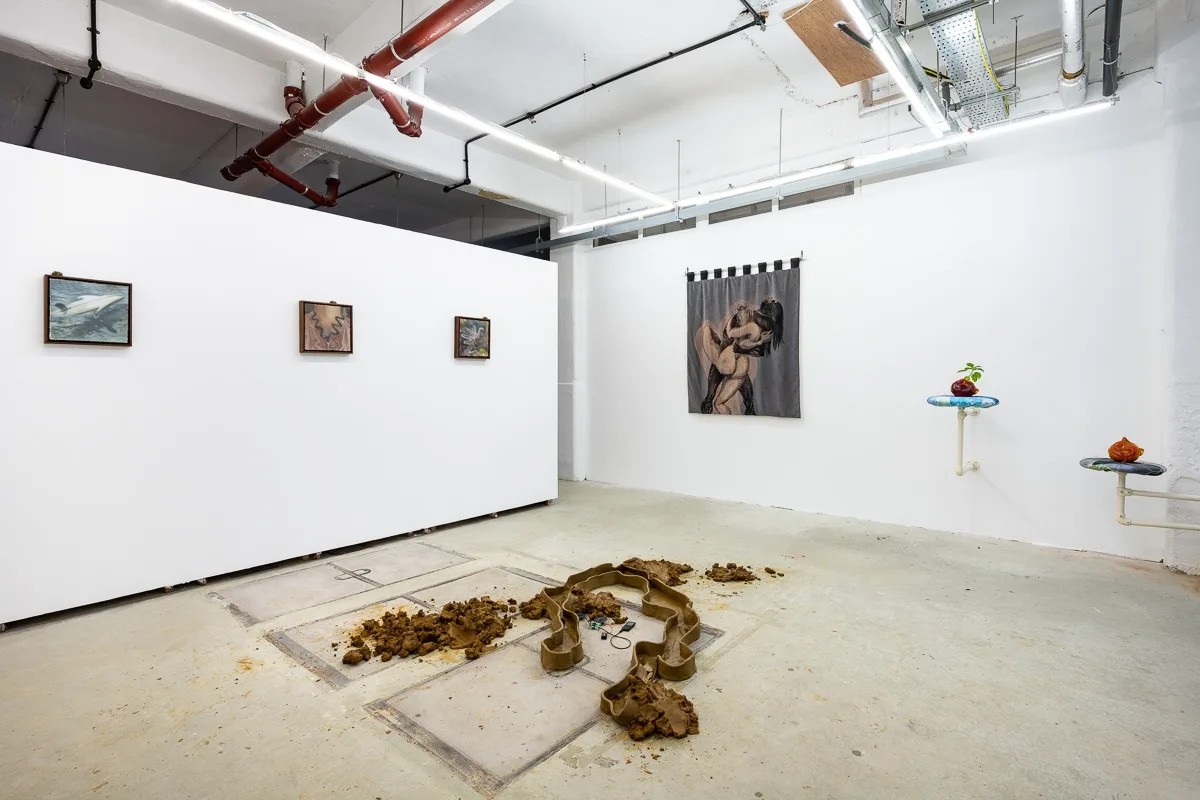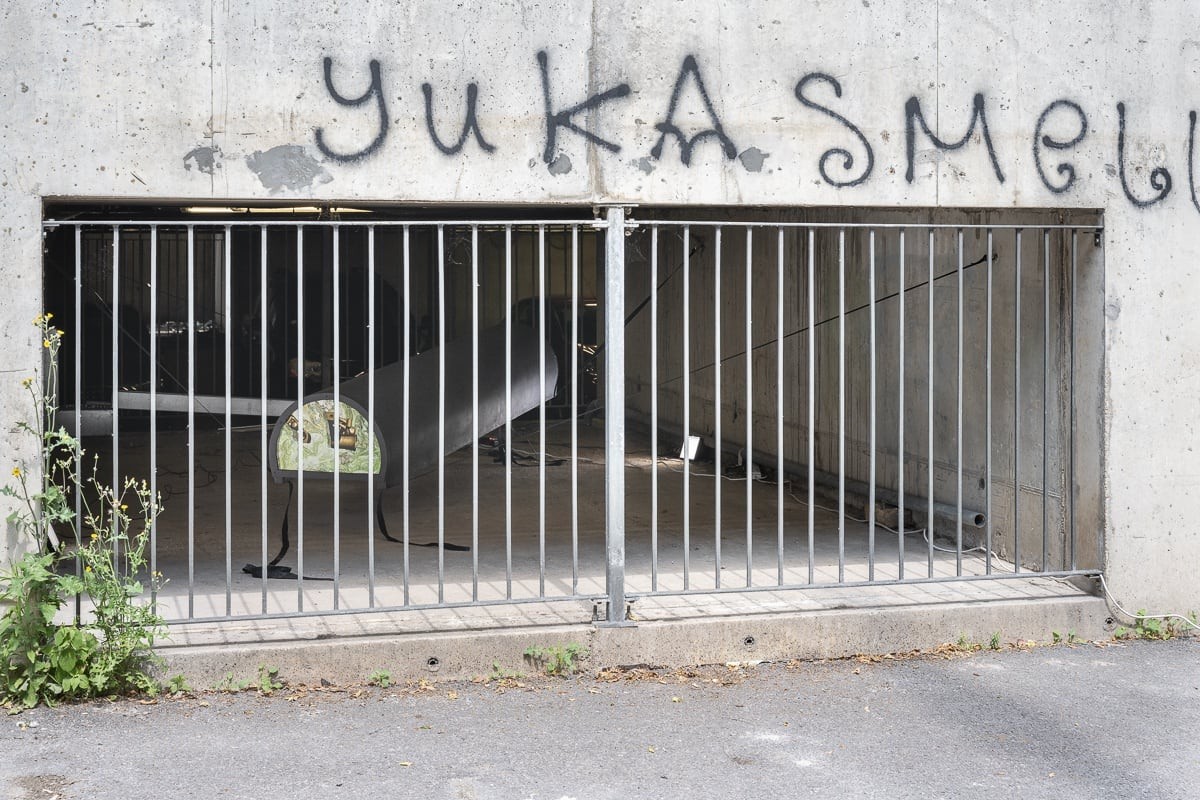émergent, London
Interview
2025
C-Mine, Genk
Exhibition Text
2025
Hannah Barry Gallery x Foolscap Editions, London
Editor
2025
Lo Brutto Stahl, Paris & Basel
Exhibition Text
2024
Hannah Barry Gallery x Foolscap Editions, London
Editor
2024
émergent, London
Interview
2024
DUVE, Berlin
Exhibition Text
2024
émergent, London
Interview
2024
Incubator, London
Exhibition Text
2023
QUEERCIRCLE, London
Exhibition Text
2023
L.U.P.O., Milan
Catalogue Essay
2023
Tarmac Press, Herne Bay
Catalogue Essay
2023
Brooke Bennington, London
Exhibition Text
2023
Freelands Foundation, London
Catalogue Essay
2023
superzoom, Paris
Exhibition Text
2023
Lichen Books, London
Catalogue Essay
2022
Tennis Elbow, New York
Exhibition Text
2022
émergent, London
Interview
2022
Guts Gallery, London
Exhibition Text
2021
Kupfer Projects, London
Exhibition Text
2021
Saelia Aparicio, Evangelia Dimitrakopoulou, Jack Jubb, Davinia-Ann Robinson, Roxman Gatt
Curated by Jeanette Gunnarsson
'The creature is always a symptom.'
– Eric Santer, 2006
Never far from conversations of embodiment are those of humanity’s relationship to the animal. Since the cradle of our existence this question has plagued the borderlines of our self-conception – recall the crude stick men chasing bison found scrawled in the Lascaux caves, or the horned chimeric figures of those at Les Trois-Frères. Understanding this distinction has set us apart from the ostensible brutality and wildness of life caught at the vanishing point of consciousness. It has also produced a contradictory and vexed distinction that has contributed to what Giorgio Agamben calls 'the anthropological machine of humanism' – a discursive system used to manufacture and propagate the eternal and monolithic silhouette of a universal rational subject – one that is self-reflexive, intentional and sovereign; free to be Lord of its very own skull-shaped kingdom. It is a distinction that continues to be used to subjugate those perceived as lacking some irreducible human essence; a language used to silence those seen as deviant, irredeemable or other.
Speaking of animality in the context of Being Here may seem counterintuitive. Taken at first glance, a visual preoccupation with animals remains elusive, albeit not wholly divorced from the artists’ work: there remains the eidetic faux naïf portraits of aquatic lifeforms by Jack Jubb, the wraith-like whispers of Evangelia Dimitrakopoulou’s live chemical syntheses, and the silky, allegorical butterfly that adorns Roxman Gatt’s transformative school uniform. In spite of these works, it is clear this not an exhibition about animals, nor animality per se. Rather, for me what brings these works together is their shared fascination with precisely that which problematises the discourse of animal and human – 'the anthropological machine' and that which it must continually deny as 'other' in order to survive. Contained with the works of Being Here is an emergent and generative power, one that splinters throughout history in moments of crisis or profound change – a disruptive and indeterminate force that Eric Santer would call, the creaturely.
'What I am calling creaturely life,' Santer writes in his 2006 book, Creaturely Life,'is a dimension of human existence called into being at […] historical fissures or caesuras in the space of meaning.' Baring its teeth in moments of catastrophe or ruin – the aftermath of war, plague and revolution, periods in which assumptions of humanism and the limits of human politics are called into question – the creaturely is a symptom, a manifestation of trauma to the symbolic order of society. Take for instance, the emaciated yet passionate figures of Schiele or Munch that emerged after the brutality of the first World War, the rhapsodic doom of Wojnarowicz’s photography at the height of the AIDs epidemic, or the seminal work by Chris Ofili, No Woman, No Cry, that was created using paint, graphite and elephant dung in the aftermath of the murder of Stephen Lawrence. In every case, the creaturely emerges less as a set of figurative rules, rather as a juxtaposition of terms: that which documents a damaged past at the very moment it announces a transformed future to come.
Despite their lack of an explicit animality, the works of Aparicio and Robinson are similarly imbued with the creaturely. For Santer, the creature 'is not so much the name of a determinate state of being as the signifier of an ongoing exposure, of being caught up in the process of becoming creature through the dictates of divine alterity.' In Aparicio’s work, this exposure to difference takes the form of a disrupted male gaze. Seen through the eyes of a catwalk – a being-seen par excellence – a series of hybrid bodies are revealed to us, subverting their gender and exalting a delightful absence of normative constrains on the human body. Robinson’s, in contrast, sublimates the body into an earthly register of vegetation and soil. Using materials gathered from spaces where the artist has endured colonial violence, these are environments that speak to an organic desire for commune, rebirth and renewal at the same moment as highlighting the brutality of policing and regulation that black lives remain subject to.
Set against our current climate of ecological crisis, accelerating social inequality, the biogenetic revolution and struggles over resources, Being Here is an expression of the creatureliness of contemporary life. Creaturely, in so far as it is a provocation to the great anthropological machine of modernity, that which suggests there is only one way of being here. The works of Saelia Aparicio, Evangelia Dimitrakopoulou, Jack Jubb, Davinia-Ann Robinson and Roxman Gatt, in contrast to the crude form of a single human subject elevated from the world around them, demonstrate the pluralities of perception, memory and identity that define our age. Faced with an apocalyptic culture of dehumanisation, anonymity and doom, they are both a sign of total collapse and a portent of new freedom. They represent the possibility to rethink our social ties and express new forms of creativity and criticality attuned to the tenuousness of human exceptionalism as well as to the exhilarating potential of creaturely encounters with other-than-human lives.


Collective Ending, London
Catalogue Essay
2021
L21 Gallery S’Escorxador, Palma De Mallorca
Exhibition Text
2021
TJ Boulting, London
Exhibition Text
2021
COEVAL, Berlin
Interview
2021
Quench Gallery, Margate
Exhibition Text
2021
COEVAL, Berlin
Interview
2021
COEVAL, Berlin
Interview
2021
Foolscap Editions, London
Catalogue Essay
2020
Gentrified Underground, Zurich
Catalogue Essay
2020
Camberwell College of Arts, London
Exhibition Text
2019
Kronos Publishing, London
Editor
2019
Elam Publishing, London
Editor
2019
William Bennington Gallery, London
Catalogue Essay
2019
Elam Publishing, London
Catalogue Essay
2018
Camberwell College of Arts, London
Exhibition Text
2018
Limbo Limbo, London
Exhibition Text
2017
Saatchi Art & Music Magazine, London
Review
2017
B.A.E.S., London
Exhibition Text
2016